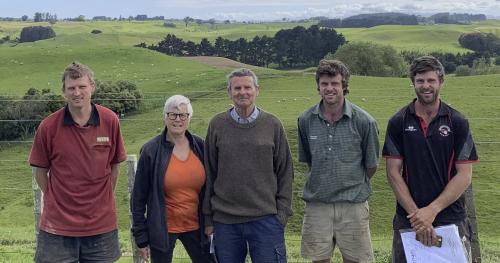Search results
Displaying 291 - 300 results of 891
- Factsheetpage 1 42 25 august 2023 submission ministry environment ministries primary industries review new zealand emissions trading scheme redesigned ets permanent forest category consultations beef lamb new …
- NewsLincoln University-based plant scientist Professor Derrick Moot says a soil test will give farmers an understanding of what they are dealing with. He says it is possible that the nutrient status …

- NewsThe annual round of regional Ballance Farm Environment Awards has wrapped up, with sheep and beef farmers winning five of the ten regional Supreme …

- Editable PDF… rates average lambing date 2ths average weaning date 2ths lambing lambs weanedinlamb ewes july weaning weight liveweight nonreplacement … rams 2 start live weightas 1 july lambs weaning 3 end live weightas 30 june lambs when …
- Factsheet… yesno 2tooth ewe body condition score bcs weaning average bcs all 2tooths ewes weaning each year bcs 3 above yesno 2tooth ewe … each year kgs above yesno cow liveweight weaning average weight all cows weaning each …
- Other PDFregional delivery plan 2025 midnorthern north island what doing our mnni regional delivery plan purpose address our farmers needs providing tools information support create confidence engagement …
- Other PDF1 29 beef lamb deer industry may 31st 2024 submission emissions reduction targets 4th emissions budget inclusion shippingaviation emissions climate change commission climate change commission draft …
- Industry datalamb crop 2023 beef lamb new zealand p23019 december 2023 0800 beeflamb 0800 233 352 wwwbeeflambnzcom farmers farmers 2lamb crop 2023b lnz economic farm insights about report lamb crop report …
- Factsheetfactsheet snapshot research using smartworm app targeted selective treatment tst helped reduce drench use while having little impact lamb growth smartworm mobile app developed ireland cotter agritech …
- NewsThe Facilitation Learning and Change Programme that came out of the Red Meat Profit Partnership (RMPP) was completed in March 2021. Beef + Lamb New Zealand (B+LNZ) then integrated the RMPP Action …
